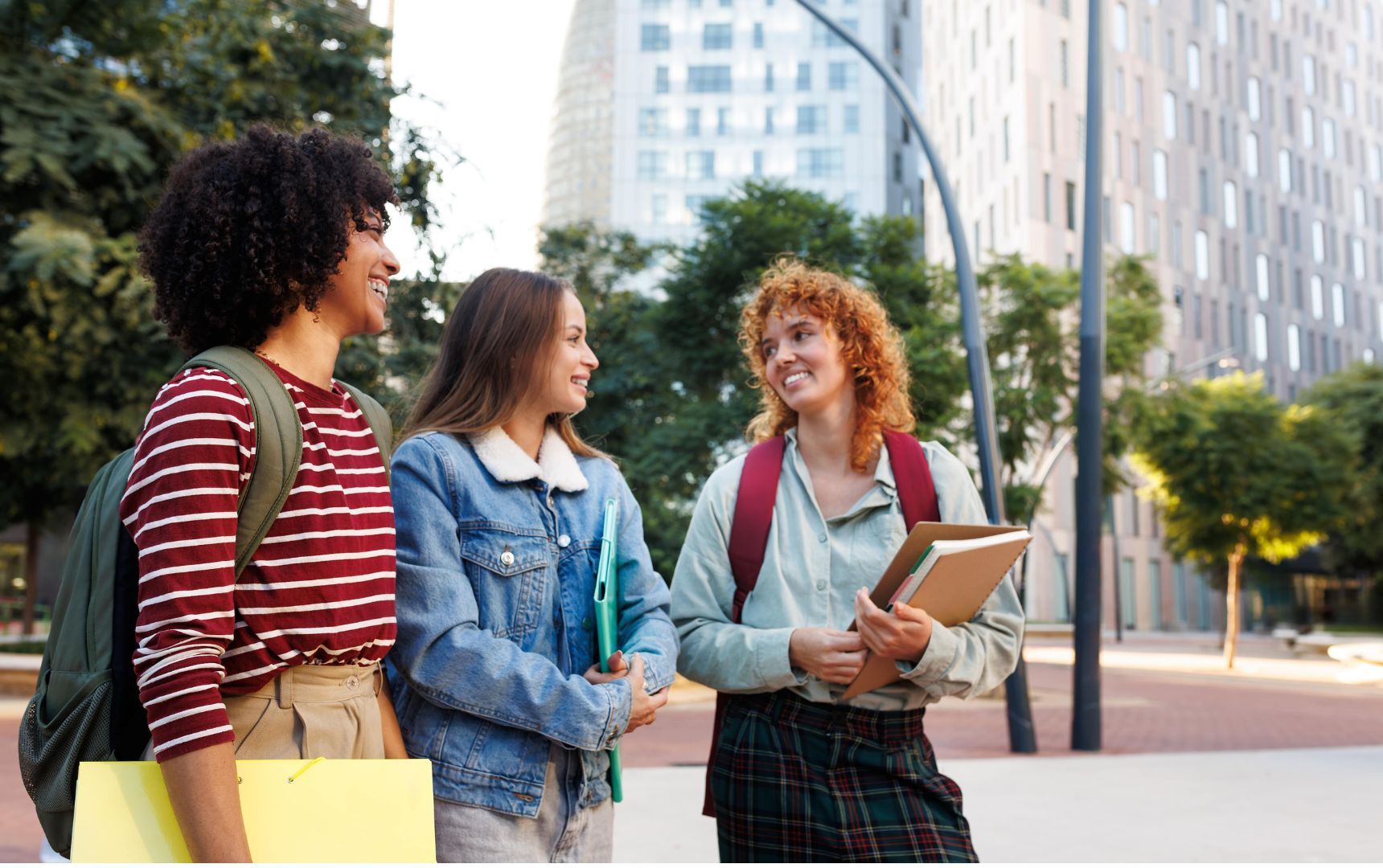6 New Marketing Ideas for Student Recruitment Events — Crafted Especially for Higher Ed Marketers Tired of Reading Blogs about Event Marketing

October 29, 2020

I have been avoiding writing this article for well over a month now.
Event marketing blog posts have inundated my inbox and social feeds in recent weeks like the “tips for how to work from home” posts did back in late March.
“Does the internet really need another post on virtual event marketing for student recruitment?” I asked myself this question on more than one occasion.
To be honest, it doesn’t — and yet, here I am writing this piece...and here you are, reading it.
So, let’s make a pact — we’re going to assume you understand the importance of a strategic, personalized promotional plan that involves more than a couple of segmented emails, an array of paid and organic social media content, a landing page that is conversion-centric and has secondary and tertiary content offers, etc. — that way I don’t need to spend time on the basics.
Instead, my hope is to offer you a handful of new ideas for how to promote virtual events, host virtual events, and follow-up with prospective students post-virtual events.
How to generate quality RSVPs to a virtual student recruitment event
Since COVID-19 has totally disrupted the event marketing space, enrollment marketing teams have struggled to effectively pull off dynamic, differentiated recruitment events.
In a sense, the playing field has been leveled and most recruiters are left with Zoom and a Powerpoint presentation as the tools at their disposal to convince prospects and inquiries that their institution is worth applying to.
So what should you do to generate quality RSVPs to your virtual event?
1. Launch a social ad sequence on Facebook and/or LinkedIn
Paying to promote events on social media isn’t new, but most enrollment marketers fail to see meaningful ROI when it comes to generating quality RSVPs.
More often than not, enrollment marketers drop a link to their event registration page into Facebook Ads Manager, throw in a featured photo, choose a couple of general demographic and psychographic targeting selects, and launch the traffic ad.
A better, more efficient way of generating RSVPs is by following what we at DD Agency call the Social Ad Sequencing or “SAS” framework.
Here’s how it works:
- Step 1: Launch a 30-60 second Facebook Video Ad 3-4 weeks out from your event that promotes registration. Ideally, you would hire a company like DD Studio to make you a custom video that articulates the value of the event, but if resources are tight, any brand video will do. Use a look-a-like audience by uploading a list of 2-3k of your current students.
- Step 2: After the first ad runs for 7-10 days, create a second ad campaign that targets everyone that watched 50% or more of the video used in the first ad (this should be 25-30% of all video views). Launch a carousel ad that details the top 3 reasons (one reason per frame) why someone should attend the event. Remember, this promo is going to folks who have already engaged with your video...so, in theory, these are highly qualified impressions!
- Step 3: Finally, in the 5-7 days leading up to the virtual event, run a final ad campaign to everyone that clicked through to your event registration page. This ad campaign should be a Facebook Lead Ad campaign in an effort to make the registration process for these highly qualified impressions as frictionless as possible. Remember — the audience receiving these ads have seen and engaged with your two previous ads! When it comes to copy and creative here, you should get...well...creative. These are people who have at least some affinity for your brand/interest in attending the event.
2. Develop a pre-Event physical and digital swag email campaign
As a digital marketer, I can’t believe I am saying this, but, I think enrollment marketers should seriously consider using direct mail (very strategically) for event promotions. Note the parenthetical!
We’ve never spent more time in front of our screens and I’ll be the first to admit that checking the mail each day is something I actually look forward to now...it’s like an event in and of itself!
So, here’s the angle:
Use the incentive of receiving an “event success kit” or some sort of “swag bag” as a way to get people to register early for the event. Everyone that registers at least 7 days before the scheduled event will be shipped a swag box.
Think creatively here...this is a huge branding opportunity – and I promise you there is a way to make this affordable using tools like Postalytics.
Include the traditional swag like a coffee mug, bumper sticker, etc., but be sure to include some piece of digital swag that can only be accessed after the virtual event (like a promo code for a free book on Amazon or discount on additional swag from the bookstore). It wouldn’t hurt to add an item or two that is the antithesis of sitting at a desk staring at a screen...such as sweatbands or branded headphones (to encourage exercise and activity).
Furthermore, while it’s too early to have any hard evidence, anecdotally speaking, every admissions team I’ve talked to that has used physical invites of some kind for their virtual events have reported remarkably higher show (attendance) rates at these events than those who have only opted to use digital channels.
How to host a virtual student recruitment event that stands out
Zoom fatigue is real — so how do enrollment marketers conduct virtual events that are truly engaging?
1. Try different platforms to increase engagement during virtual events
Meet Rume and SocialHour — these platforms allow you to organize virtual events by “topic rooms” and are remarkably easy for users to hop between rooms and join different conversations. You can also direct all users to the “main stage” for audience-wide presentations or communications.
Imagine a quick 20-minute presentation that ends with an invitation for users to join “round table-like” discussions around campus culture, financial aid, virtual happy hour (for those grad school prospects), faculty spotlights, and student panels. Once a prospective student has had her fill of campus culture info, she can easily hop in and watch the student panel conversation.
2. Be intentional and strategic about the timing of your events
Furthermore, timing is everything when it comes to hosting virtual events.
I don’t know what marketers are thinking, but the virtual events I am consistently invited to are events that start at 11:00 am and 2:00 pm...I don’t know what blog post is telling these marketers that this is the best time to host a virtual event, but it should be removed from the internet.
The framework every enrollment marketer should use — whether you recruit undergrad, adult, and/or graduate students — is what I like to call the Coffee Hour or Happy Hour framework.
All virtual events should take place before the work/school day or immediately after the work/school day. Remember, commutes are gone for most folks...so an 8:00 am information session where you send attendees a virtual Starbucks gift card ahead of time has a huge opportunity to generate quality RSVP buzz (pun totally intended).
If you’re a graduate enrollment management scratching your head about how to get more folks to attend your virtual, program-specific information sessions, schedule every event at 4:30 or 5:00 pm and send attendees a $7 credit to reimburse them for a glass of wine or a beer.
Too crazy?
No, it’s not! You would have spent this money on coffee and donuts or beer and chips at an in-person event anyway. Think outside the box, people!
Stop acting like the world is the same and that the way you treated virtual events last year is the same way you should treat them this year.
How to launch a post-event communications strategy that inspires
The biggest mistake enrollment marketers make when it comes to event marketing is failing to adequately plan a post-event communications strategy.
This is incredibly important in “normal” times, but especially important after virtual events (follow-up is so much harder when you aren’t able to shake hands and have a personal conversation with a prospective student).
Here are two unique ideas for how to add value with your follow up communications and repurpose the event’s content as a new inquiry-acquisition tool:
1. Use a loom or video SMS to provide a scholarship or grant consultation
Schedule a personalized walk-through — via a Video SMS invite using a service like Tape — of your school’s scholarship, grant, and assistantship opportunities and couple it with a custom consultation of other outside scholarships a prospect might qualify for based on their resume.
In a moment with so much social and economic uncertainty, an opportunity to reduce friction for the prospective student should be snatched and immediately optimized.
A less personalized, but “easier” option is to record a Loom video with a teaser of what this consultation will look like and send an email blast to all attendees and non-attendees inviting prospects to book time with a counselor or coordinator.
Brainstorming with a qualified inquiry or applicant around how they might be able to make the pursuit of a program at your school financially possible is a sure way to add value.
This approach is 100x better than sending recurring “just following up” or “circling back” or “thanks for coming to the event, will you please apply now?” communications!
2. Geo-target areas hit hardest by COVID — economically, speaking
This idea is more appropriate for our GEM readers. Historically, graduate schools have seen huge upticks in enrollment during recessions. Now, we’ve never had a pandemic coincide with a recession so the jury is still out on what this will mean for the demand around graduate education.
This said, the savvy graduate enrollment marketers out there will take their recorded program-specific information sessions and turn them into 60 to 90-second recap videos that can be used in inquiry-acquisition campaigns.
By geo-targeting areas that have been hit especially hard by COVID (from an economic standpoint) with Facebook Ad Event Recap campaigns, GEM professionals can assess what demand for advanced degrees is likely to look like in the coming months.
A related idea here is to also target industries — like leisure and hospitality — which have been incredibly hurt by the pandemic. Many of the folks that work in these spaces will, in all likelihood, be looking to switch careers...enter the opportunity for graduate schools.
Finally, you’ll want to craft a campaign-specific landing page that speaks to the ROI of your program and shares stories of successful graduates (bonus points if you can find alumni who pursued a degree during/after the 2008 crisis).
So...what do you think? Did I keep my promise for a fun, engaging, and out-of-the-box(ish) post? I hope I’ve introduced you to a few new, creative and actionable ideas that you can implement for your next recruitment event.
If you’d like to brainstorm event recruitment strategies over a cup of joe, I’d be happy to share customized advice for your school! Feel free to schedule a meeting with me at a time that works best for you.
Looking to increase your organic search rankings? Sign up for my SEO Strategy Cohort to make a game plan.
.jpg) EBOOK
EBOOK
See how schools are using HubSpot for their enrollment marketing
Service Categories: Enrollment Marketing, Inbound Marketing, Digital Advertising, Content Strategy









.png)